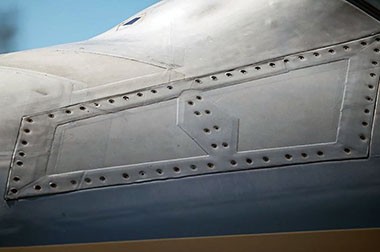2024-T8 vs. 2124 Aluminum Evaluating the Best Alloy for Your Engineering Needs
When selecting the right aluminum alloy for engineering applications, especially in industries such as aerospace, automotive, and heavy machinery, it is crucial to consider multiple properties such as strength, ductility, thermal conductivity, and electrical performance. 2024-T8 and 2124 are commonly chosen high-strength aluminum alloys, and they have some differences in performance that may influence the selection for different requirements.
2024 T8 is still the preferred choice in high-performance aerospace applications due to its outstanding strength. On the other hand, 2124 offers more advantages in specific needs such as thermal performance, impact toughness, and electrical properties, making it suitable for a wider range of applications.
Which Alloy is Most Suitable for Your Engineering Needs?
- 2024-T8 aluminum alloy is mainly suitable for structural components that require high strength and load-bearing capacity, such as critical parts in aerospace, aircraft, and military applications.
- 2124 aluminum alloy excels in impact resistance, thermal conductivity, electrical conductivity, and applications that require a balance of strength and ductility, making it ideal for scenarios that need comprehensive performance considerations.
| Application | 2024-T8 Aluminum Alloy | 2124 Aluminum Alloy |
| High-strength structural components (aerospace, aircraft, military, etc.) | 2024-T8 aluminum alloy has higher tensile strength, making it suitable for load-bearing parts that require high strength, such as aircraft fuselage and wing beams. | 2124 aluminum alloy has slightly lower tensile strength. While it is suitable for some structural applications, it is not as suitable as 2024-T8 aluminum alloy for parts requiring extremely high strength. |
| Impact or dynamic load applications | 2024-T8 aluminum alloy has poorer ductility. While it has high tensile strength, it may suffer from brittle fracture when subjected to impact or dynamic loads. | 2124 aluminum alloy has higher ductility and elasticity, making it better able to withstand impact and dynamic loads. It is suitable for applications that require impact resistance or dynamic load resistance. |
| Thermal dissipation or high-temperature applications | 2024-T8 aluminum alloy has lower thermal conductivity and is not suitable for applications requiring efficient thermal dissipation. | 2124 aluminum alloy has higher thermal conductivity, making it suitable for components that require heat dissipation, such as engine parts and heat exchangers. |
| Electrical applications or components requiring conductivity | 2024-T8 aluminum alloy has lower electrical conductivity and is not suitable for applications requiring high electrical conductivity. | 2124 aluminum alloy has better electrical conductivity than 2024-T8 aluminum alloy, making it suitable for applications requiring conductivity. |
| Aerospace applications requiring a balance of strength and ductility | 2024-T8 aluminum alloy has high strength but poor ductility, making it suitable for aerospace applications where strength is prioritized over ductility. | 2124 aluminum alloy offers a balance of high strength and good ductility, making it suitable for aerospace applications that require both strength and ductility. |
Considerations for choosing 2024-T8 and 2124 aluminum alloys
Tensile Strength (UTS and Yield Strength)
If tensile strength is the primary consideration, 2024-T8 is the better choice. If the engineering application requires a balance between strength and other properties, 2124 might be more suitable.
- 2024-T8 Aluminum Alloy: 2024-T8 is known for its high tensile strength and is one of the strongest aluminum alloys in the aerospace industry, particularly suitable for structural applications that require high strength. Its ultimate tensile strength (UTS) is significantly higher than that of 2124 aluminum alloy, making it ideal for load-bearing components subjected to extreme stress, such as aircraft fuselage, wing beams, and other critical structural components.
- 2124 Aluminum Alloy: While 2124 aluminum alloy also has high tensile strength, it is slightly lower than that of 2024-T8. This makes 2124 more suitable for applications that require lower strength or need a balance between strength and other performance requirements. However, in situations demanding extremely high strength, 2124's performance is relatively weaker.
Elongation at Fracture (Ductility)
If the engineering application demands high ductility, 2124 is the better choice.
- 2024-T8 Aluminum Alloy: 2024-T8 has low ductility and a small elongation at fracture, meaning it is more brittle under stress and prone to fracture. For applications requiring some ductility or tensile deformation capability, 2024-T8 may not be suitable.
- 2124 Aluminum Alloy: 2124 aluminum alloy has slightly better ductility and higher elongation at fracture, making it less prone to brittle fracture under stress. It is more suitable for applications requiring higher ductility, such as components subjected to dynamic loading or those needing subsequent forming or machining.
Thermal Conductivity
If the application requires excellent thermal dissipation performance, 2124 is the more suitable choice.
- 2024-T8 Aluminum Alloy: 2024-T8 has relatively low thermal conductivity and performs worse than 2124 in heat dissipation applications. If the engineering application requires efficient thermal dissipation, 2024-T8 may not be the best choice.
- 2124 Aluminum Alloy: In comparison, 2124 aluminum alloy has higher thermal conductivity, making it more suitable for applications requiring heat dissipation, such as engine components or heat exchangers.
Electrical Conductivity
If the application involves electrical conductivity requirements, 2124 outperforms 2024-T8 in electrical properties.
- 2024-T8 Aluminum Alloy: 2024-T8 has lower electrical conductivity. Although aluminum alloys are generally not used in applications requiring high electrical conductivity, in some aerospace applications, electrical conductivity based on specific weight may still be a consideration.
- 2124 Aluminum Alloy: 2124 has better electrical conductivity than 2024-T8, making it a more ideal choice for applications involving current conduction, such as electrical connectors or certain avionics equipment.
Elasticity (Impact Resistance and Toughness)
If the engineering application requires higher impact toughness or resistance to dynamic stress, 2124 would be the better choice.
- 2024-T8 Aluminum Alloy: 2024-T8 has lower elasticity and poor impact resistance, making it less suitable for withstanding sudden or dynamic stress. For applications subjected to impact or sudden stress, 2024-T8 may experience brittle fracture.
- 2124 Aluminum Alloy: 2124 has higher elasticity, better impact resistance, and greater ability to withstand sudden stress, making it suitable for applications that require dynamic load-bearing or impact resistance, such as certain aerospace components and mechanical structures.
Corrosion Resistance
There is little difference between the two in terms of corrosion resistance, but 2124 is slightly better than 2024-T8, particularly in stress corrosion cracking.
- 2024-T8 Aluminum Alloy: 2024-T8 has average corrosion resistance, especially when not anodized, and it is prone to stress corrosion cracking (SCC). In some harsh environmental conditions, 2024-T8 may require additional corrosion protection.
- 2124 Aluminum Alloy: 2124 performs slightly better than 2024-T8 in stress corrosion cracking, but the difference in corrosion performance is not significant. Like 2024-T8, 2124 also requires coatings or other protective measures to improve its corrosion resistance.
2024-T8 Aluminum vs. 2124 Aluminum Mechanical Properties
| Property | 2024-T8 Aluminum | 2124 Aluminum |
| Elastic (Young's, Tensile) Modulus, x 10⁶ psi | 10 | 10 |
| Elongation at Break, % | 4.9 | 5.7 |
| Fatigue Strength, x 10³ psi | 19 | 19 |
| Poisson's Ratio | 0.33 | 0.33 |
| Shear Modulus, x 10⁶ psi | 3.9 | 3.9 |
| Shear Strength, x 10³ psi | 44 | 41 |
| Tensile Strength: Ultimate (UTS), x 10³ psi | 75 | 71 |
| Tensile Strength: Yield (Proof), x 10³ psi | 64 | 62 |
2024-T8 Aluminum vs. 2124 Aluminum Thermal Properties
| Property | 2024-T8 Aluminum | 2124 Aluminum |
| Latent Heat of Fusion, J/g | 390 | 390 |
| Maximum Temperature: Mechanical, °F | 390 | 380 |
| Melting Completion (Liquidus), °F | 1180 | 1180 |
| Melting Onset (Solidus), °F | 930 | 930 |
| Specific Heat Capacity, BTU/lb-°F | 0.21 | 0.21 |
| Thermal Conductivity, BTU/h-ft-°F | 70 | 88 |
| Thermal Expansion, µm/m-K | 23 | 23 |
2024-T8 Aluminum vs. 2124 Aluminum Electrical Properties
| Property | 2024-T8 Aluminum | 2124 Aluminum |
| Electrical Conductivity: Equal Volume, % IACS | 30 | 38 |
| Electrical Conductivity: Equal Weight (Specific), % IACS | 90 | 110 |
Otherwise Unclassified Properties
| Property | 2024-T8 Aluminum | 2124 Aluminum |
| Base Metal Price, % relative | 11 | 10 |
| Density, lb/ft³ | 190 | 190 |
| Embodied Carbon, kg CO₂/kg material | 8.3 | 8.2 |
| Embodied Energy, x 10³ BTU/lb | 65 | 64 |
| Embodied Water, gal/lb | 140 | 140 |
Common Calculations
| Property | 2024-T8 Aluminum | 2124 Aluminum |
| Resilience: Ultimate (Unit Rupture Work), MJ/m³ | 24 | 27 |
| Resilience: Unit (Modulus of Resilience), kJ/m³ | 1380 | 1290 |
| Stiffness to Weight: Axial, points | 13 | 13 |
| Stiffness to Weight: Bending, points | 46 | 46 |
| Strength to Weight: Axial, points | 48 | 45 |
| Strength to Weight: Bending, points | 48 | 46 |
| Thermal Diffusivity, mm²/s | 46 | 58 |
| Thermal Shock Resistance, points | 23 | 21 |
2024-T8 Aluminum vs. 2124 Aluminum Alloy Composition
| Element | 2024-T8 Aluminum | 2124 Aluminum |
| Aluminum (Al), % | 90.7 to 94.7 | 91.3 to 94.7 |
| Chromium (Cr), % | 0 to 0.1 | 0 to 0.1 |
| Copper (Cu), % | 3.8 to 4.9 | 3.8 to 4.9 |
| Iron (Fe), % | 0 to 0.5 | 0 to 0.3 |
| Magnesium (Mg), % | 1.2 to 1.8 | 1.2 to 1.8 |
| Manganese (Mn), % | 0.3 to 0.9 | 0.3 to 0.9 |
| Silicon (Si), % | 0 to 0.5 | 0 to 0.2 |
| Titanium (Ti), % | 0 to 0.15 | 0 to 0.15 |
| Zinc (Zn), % | 0 to 0.25 | 0 to 0.25 |
| Zirconium (Zr), % | 0 to 0.2 | 0 |
| Residuals, % | 0 | 0 to 0.15 |









